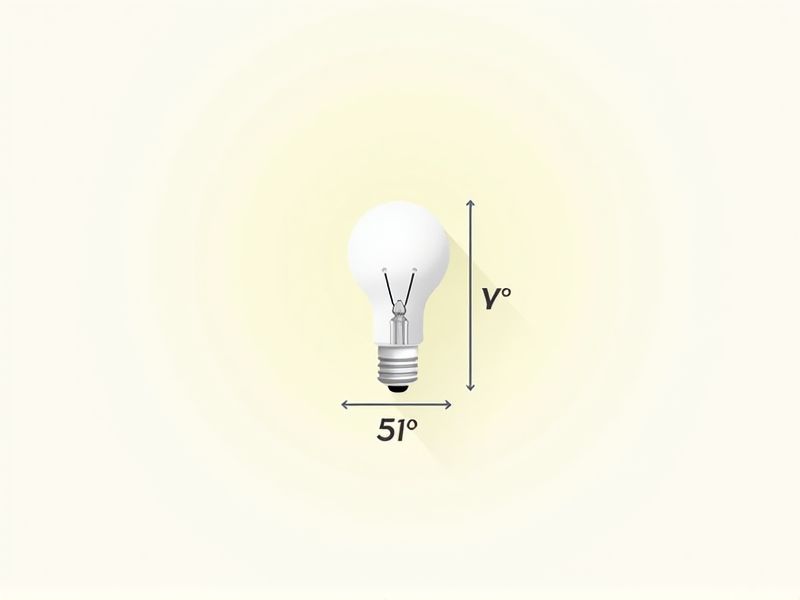
Understanding the standard dimensions of light bulbs can help you choose the right replacement for your fixtures. Common household bulbs, like the A19, typically measure about 2.375 inches in diameter and are approximately 4.13 inches long. For even more accuracy, check the bulb code: for example, A19 means the bulb is 19 eighths of an inch (or about 2.375 inches) in diameter. Always confirm both the bulb's shape and base type for a perfect fit in your lamp or lighting fixture.
Base Type
The base type of a light bulb is crucial for compatibility and performance; the most common types include Edison (E26/E27), candelabra (E12), and GU10. For instance, the E26 base is widely used in North America for standard household lighting, while the GU10 base is prevalent in spotlights and floodlights due to its twist-and-lock feature. It's essential to match the base type of your light fixture with the bulb to ensure proper connection and functionality. Your choice of base type can significantly influence energy efficiency, lumens output, and overall lighting quality.
Bulb Shape
Bulb shapes significantly influence both aesthetics and functionality of lighting solutions. Common shapes include A19, which is the standard household bulb, and BR30, often used for recessed lighting. The diameter of these bulbs plays a crucial role; for instance, A19 bulbs have a diameter of 2.375 inches, while BR30 bulbs measure 3.75 inches across. Understanding these specifications can help you make informed choices for your lighting needs.
Wattage
The wattage of a light bulb directly influences its energy consumption and brightness, measured in lumens. For example, a 60-watt incandescent bulb typically emits around 800 lumens, while an equivalent LED bulb might produce the same brightness using only 10 to 15 watts. This significant reduction in wattage not only lowers your electricity bill but also extends the bulb's lifespan, often lasting up to 25,000 hours compared to the 1,000-hour lifespan of traditional incandescent bulbs. Understanding wattage helps you make informed choices that can optimize both energy efficiency and lighting quality in your spaces.
Voltage
The standard voltage for most household light bulbs is typically 120 volts in North America and 230 volts in Europe. Light bulbs are available in various types, including incandescent, LED, and fluorescent, each with distinct energy efficiency ratings and lumens output. For instance, a 60-watt incandescent bulb emits around 800 lumens, while an LED equivalent only requires approximately 10 watts to produce the same brightness. Understanding the voltage and wattage helps you choose the right bulb that meets both your lighting needs and energy-saving goals.
Lumens
Lumens measure the total amount of visible light emitted by a light bulb, making it a critical factor in determining brightness. For instance, a standard 60-watt incandescent bulb typically produces about 800 lumens, while energy-efficient LED bulbs generate the same brightness using only 8 to 12 watts. When selecting a light bulb, consider that higher lumen ratings indicate brighter light, which can enhance your space's ambiance. Your choice of bulb can not only affect illumination but also impact energy consumption and long-term electricity costs.
Diameter
The standard diameter for light bulbs varies, with A19 bulbs measuring 2.375 inches (approximately 60 mm) and E26 bases commonly found in household fixtures. For specialty uses, the BR30 bulb typically has a diameter of 3.75 inches (95 mm), ideal for recessed lighting. This standardization ensures compatibility with most sockets, enhancing user convenience. Understanding these dimensions can significantly aid in selecting the right bulb for your lighting needs.
Length
The standard length of a light bulb typically ranges from 2 to 7 inches, depending on the type and design. Compact fluorescent lamps (CFLs) usually measure between 4 and 6 inches, while incandescent bulbs can be as short as 2 inches and as long as 7 inches. The dimensions influence not only compatibility with fixtures but also the amount of light emitted, with longer bulbs generally providing wider coverage. For optimal performance, ensure your bulb length matches your fixture specifications, enhancing both efficiency and aesthetic appeal.
Lifespan
The average lifespan of an LED light bulb is approximately 25,000 to 50,000 hours, significantly longer than incandescent bulbs, which typically last around 1,000 hours. Choosing energy-efficient LED bulbs can reduce replacement frequency and lower maintenance costs in residential and commercial settings. Moreover, compared to traditional options, LED bulbs consume up to 80% less energy, contributing to substantial electricity savings over time. By investing in higher-quality bulbs with a longer lifespan, you ensure a more sustainable lighting solution for your space.
Color Temperature
Color temperature, measured in Kelvin (K), significantly influences the ambiance and functionality of a space. For example, a warm white light at 2700K creates a cozy atmosphere suitable for living rooms, whereas a cooler light at 5000K mimics daylight, enhancing focus in workspaces. LED light bulbs offer a range of color temperatures, allowing you to select the ideal lighting for various activities. Understanding these options empowers you to make informed decisions about your home or office lighting.
Compatibility With Fixtures
Compatibility with fixtures is a crucial factor when selecting a light bulb, as it ensures proper fit and function within existing lighting systems. For instance, standard sizes like E26 (medium) or E12 (candelabra) fittings are commonly used in residential applications. It's important to match the wattage and voltage specifications--typically, incandescent bulbs range from 40 to 100 watts, while LED alternatives can provide equivalently bright illumination at significantly lower power consumption. Selecting the right light bulb not only enhances your home's aesthetics but also contributes to energy efficiency, with LED options offering up to 80% savings compared to traditional incandescent bulbs.
